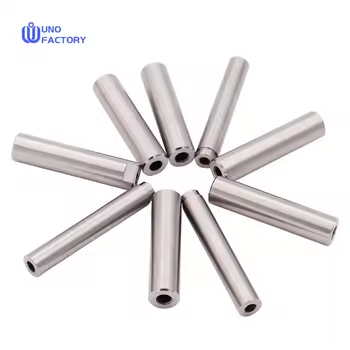Time to read: 6 min

Delve into the science of material behavior under stress with a focus on the yield strength of steel. This article provides a comprehensive understanding of yield strength, its significance in material selection, and its impact on product design within the unofactory industry.
Mastering Material Stresses: The Pivotal Role of Yield Strength of Steel
In the field of material science and engineering, particularly within the unofactory sector, understanding the stresses a material can withstand is essential for predicting how it will perform under real-world conditions. The concept of yield strength of steel is central to this understanding, offering insights into a material's ability to resist deformation.
Yield Strength of Steel: Defining the Elastic to Plastic Transition
Yield strength of steel is the threshold at which a material transitions from elastic to plastic deformation. This critical point is vital for unofactory engineers to know, as it determines the material's ability to return to its original shape after stress is applied. The calculation of yield strength of steel involves a specific formula, but first, it's important to understand its graphical representation on a stress-strain curve.
Graphical Representation: Yield Strength of Steel on the Stress-Strain Curve
The stress-strain curve is a visual tool that helps unofactory engineers understand the yield strength of steel and other material properties. Here's a detailed look at the curve's features:
-
Yield Point: This indicates the beginning of plastic deformation in steel, a key reference for assessing tensile strength. It's found at the end of the linear section of the curve, marking the transition to non-linear behavior.
-
Elastic Limit: This point shows the maximum strain a steel material can handle before permanent deformation occurs. Beyond this limit, the material will not return to its original shape once the stress is removed.
-
Proportionality Limit: This is where stress and strain in steel are no longer directly proportional, typically determined using Young’s modulus.
-
True Elastic Limit: This less commonly used point marks the initial stress-induced crystalline structure shift in steel, which is difficult to detect.
-
Upper and Lower Yield Points: The upper yield point indicates the start of material crystal lattice dislocations in steel, influenced by minor strain variations and testing equipment. The lower yield point, more reliable in testing, corresponds to the appearance of Luders bands before strain hardening.
-
Offset Yield Stress: Also known as proof stress, it's the most common method for describing the yield strength of steel. It's found by drawing a line parallel to the linear part of the stress-strain curve, intersecting at the yield strength point.
-
Necking and Fracture: These are post-yield phenomena in steel. Necking is a localized deformation preceding fracture, which occurs at peak stress levels. Fracture follows necking, with stress decreasing as the sample's area reduces post-necking.
Calculating Yield Strength of Steel
The calculation of yield strength of steel relies on the general stress formula. While the exact formula is not provided here, it typically involves considerations of force and area.eywords




